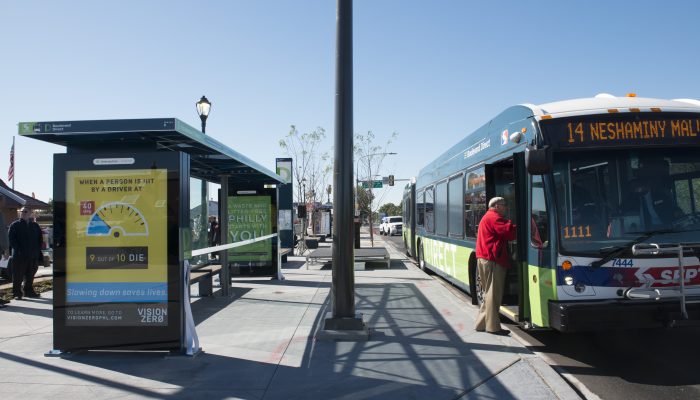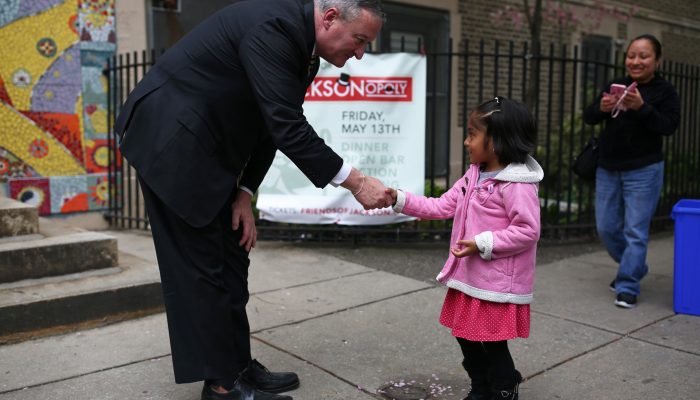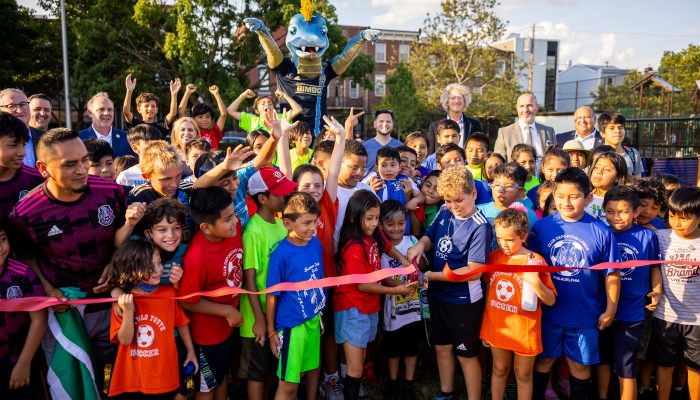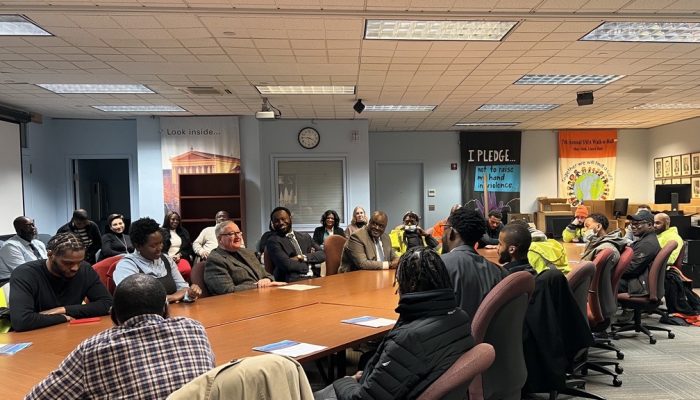In 2016, with support from a U.S. DOT TIGER planning grant, the City of Philadelphia, PennDOT, and SEPTA joined together to develop the Roosevelt Boulevard: Route for Change Program to make the Boulevard more safe, accessible, and reliable for all users. After five years of many rounds of public meetings and stakeholder conversations, as well as hundreds of computer simulations to test alternatives and refine ideas, the City is proud to release the Route for Change Program report.
The report is the City’s framework to transform Roosevelt Boulevard through improvements for the near term, 2025, as well as the longer term 2040 guiding principles and design alternatives.
Commitment to Vision Zero
The number and severity of traffic crashes is a public health threat to Philadelphians and Boulevard travelers. Today, neighbors have to cross 12-lanes of high speed vehicular traffic, which is the length of a football field, to grab the bus, or reach the stores right across the street.
Crashes along this corridor account for 14% of all fatal crashes in the city, with Black and brown communities disproportionately impacted. Improvements to Roosevelt Boulevard to make it safer for everyone whether you walk, drive, ride transit or bike is a key priority of the City’s Vision Zero Action Plan 2025 and our goal of zero traffic fatalities by 2030.
Planning in Action
An important part of the Route for Change program is not just to plan for change along the boulevard, but to make change happen. As community and transportation needs were uncovered during the planning process, solutions were pursued and immediately implemented including:
- Improvements in transit service and bus frequency in partnership with SEPTA through the Boulevard Direct Bus
- Working with PennDOT to upgrade the communications infrastructure to support future “intelligent transportation system” improvements
- And most significantly, launching the automated speed camera enforcement pilot program which started in June 2020. Since the cameras were installed at eight locations, the number of speeding violations has dropped by 93% showing a decline in excessive speeds. Speeding is a major factor in some of the worst tragedies seen on the Boulevard in recent years.
What is coming over the next five years (2025 improvements)
Over the next 5 years, the Boulevard will see improvements to local bus stops, business access transit lanes (BAT) and a new phase of Direct Bus to connect the Frankford Transportation Center to the Wissahickon Transportation Center.
Long-term vision (2040 improvements)
In the long-term, the Boulevard will see reduced posted speed limits, improved sidewalks and sidewalk connections, two-way bike lanes, and dedicated transit lanes for busses.
To provide comments or feedback on the Roosevelt Boulevard: Route for Change program, please email VisionZeroPHL@phila.gov.




